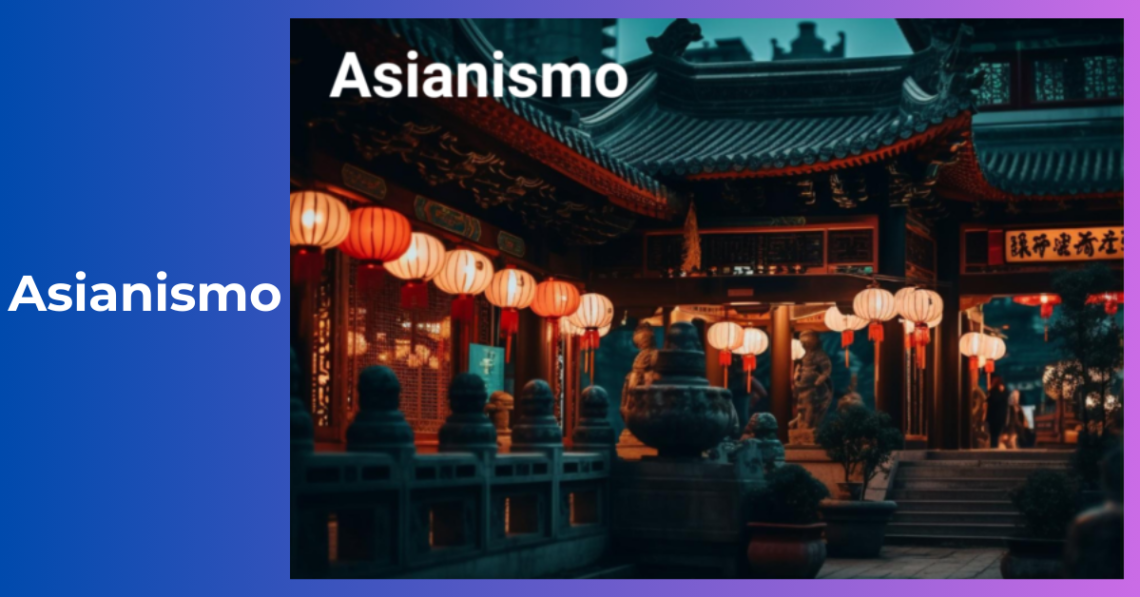
Understanding Asianismo_ A Comprehensive Guide
Asianismo is a concept that refers to the cultural, historical, and social dimensions of Asian identity and influence.
This term encompasses the rich and diverse heritage of Asian peoples and their impact on global culture.
Asianismo encompasses the cultural, historical, and social dimensions of Asian identity and influence. It reflects the rich heritage and global impact of Asian cultures, highlighting their diverse contributions to global culture and society.
In this article, we will dive deep into the meaning of Asianismo, explore its significance, and understand its influence in various contexts.
Our goal is to provide a comprehensive and insightful analysis of Asianismo that is accessible and informative.
What is Asianismo?
Asianismo is a term that embodies the cultural, historical, and social characteristics of Asian identities and their global influence.
It reflects the myriad ways in which Asian cultures, traditions, and peoples contribute to the broader global tapestry. The term “Asianismo” can be broken down into several key areas:
Cultural Dimensions of Asianismo
Asianismo highlights the rich cultural heritage of Asia. This includes traditional practices, languages, arts, and philosophies that have been passed down through generations.
Asian cultures are incredibly diverse, with each region having its unique traditions.
For instance, East Asian cultures are known for their Confucian values, intricate calligraphy, and traditional ceremonies, while South Asian cultures are renowned for their vibrant festivals, diverse languages, and historical epics.
Art and Literature
Asianismo encompasses the art and literature of Asia, which are renowned for their depth and diversity. Classical Asian literature includes works like “The Tale of Genji” from Japan and “The Ramayana” from India.
Asian art ranges from the delicate brushstrokes of Chinese watercolor to the intricate patterns of Indian textiles. These artistic expressions not only reflect cultural values but also influence global art trends.
Cuisine
Asian cuisine is another crucial aspect of Asianismo. From the spicy curries of India to the delicate sushi of Japan, Asian food has a global presence.
Also Read : SUKITIR _ REVOLUTIONIZING URBAN MOBILITY WITH INNOVATIVE ELECTRIC SCOOTERS
Each region’s cuisine reflects its unique cultural history and geographical influences.
For instance, Southeast Asian dishes often incorporate a mix of sweet, sour, salty, and spicy flavors, while East Asian cuisine might focus on harmony and balance.
Historical Context of Asianismo
The history of Asianismo is marked by significant events and movements that have shaped the continent’s identity.
Asia’s historical influence is vast, spanning ancient civilizations, colonialism, and post-colonial developments.
Ancient Civilizations
Asia is home to some of the world’s oldest civilizations, including the Indus Valley Civilization, ancient China, and Mesopotamia.
These civilizations laid the groundwork for many aspects of modern society, from writing systems to urban planning.
Colonial Era and Independence Movements
The colonial era had a profound impact on Asia, with European powers establishing control over many regions.
This period led to significant cultural and social changes, as well as resistance movements that eventually resulted in the independence of many Asian nations.
The struggle for independence and the post-colonial challenges faced by these nations are integral to understanding contemporary Asianismo.
Social Aspects of Asianismo
Asianismo also encompasses the social structures and dynamics within Asian societies. These include family structures, social norms, and the role of tradition in everyday life.
Family and Community
In many Asian cultures, family and community play a central role in individual lives. Traditional values often emphasize respect for elders, communal living, and collective responsibility.
These social norms can vary widely between different regions and cultures, but the importance of family remains a common thread.
Modern Influences and Globalization
As Asia continues to modernize and globalize, new social dynamics are emerging.
Urbanization, technological advancements, and cultural exchanges are reshaping traditional practices and social structures.
For example, the rise of digital media has given a new platform for Asian cultures to influence and interact with global audiences.
The Global Influence of Asianismo
Asianismo’s impact is not confined to Asia; it extends globally, influencing various aspects of life around the world.
Cultural Exchange
Asian cultures have increasingly permeated global culture through film, music, fashion, and technology.
Bollywood movies, K-pop music, and Japanese anime are just a few examples of how Asian cultural products have gained international popularity.
This cultural exchange enriches global diversity and fosters greater understanding between different cultures.
Economic Impact
Asia is a major player in the global economy, with countries like China, Japan, and India being economic powerhouses.
The economic success of Asian nations has significant implications for global trade, investment, and development.
Asian businesses and innovations are shaping global markets and setting trends in various industries.
Diplomatic Relations
Asianismo also influences international diplomacy. The rise of Asian countries as global players has led to new geopolitical dynamics and collaborations.
Understanding Asian cultural and historical contexts is crucial for effective diplomacy and international relations.
Key Figures and Movements in Asianismo
Several influential figures and movements have played a significant role in shaping Asianismo. These individuals and groups have contributed to the cultural, social, and political landscape of Asia.
Influential Figures
- Confucius: An ancient Chinese philosopher whose teachings on ethics, politics, and morality have deeply influenced East Asian cultures.
- Mahatma Gandhi: A leader in India’s struggle for independence whose principles of non-violence and civil disobedience have inspired movements worldwide.
- Yoko Ono: A Japanese artist and musician whose work has had a significant impact on contemporary art and music.
Key Movements
- The Asian Renaissance: A movement that seeks to revive and celebrate traditional Asian cultures and values in the modern world.
- Pan-Asianism: An ideological movement that promotes solidarity and cooperation among Asian nations.
Conclusion
Asianismo is a multifaceted concept that captures the essence of Asian cultural, historical, and social identities.
It highlights the diverse heritage of Asian peoples and their significant impact on the global stage.
By exploring the various dimensions of Asianismo, we gain a deeper understanding of the richness of Asian cultures and their contributions to the world.
Also Read : SMMCOMPARE _ THE ULTIMATE GUIDE TO COMPARING SOCIAL MEDIA MARKETING SERVICES
In an increasingly interconnected world, appreciating and understanding Asianismo is crucial for fostering global harmony and respect.
As Asian cultures continue to influence and inspire, the concept of Asianismo will remain a vital part of the global cultural landscape.
FAQs about Asianismo
What is the meaning of Asianismo?
Asianismo refers to the cultural, historical, and social dimensions of Asian identities and their global influence. It encompasses the rich heritage, traditions, and impact of Asian cultures on the world.
How does Asianismo influence global culture?
Asianismo influences global culture through cultural exchange, where Asian art, literature, and media reach international audiences. It also affects global economic trends and diplomatic relations due to the growing prominence of Asian nations.
Why is understanding Asianismo important?
Understanding Asianismo is important for appreciating the diversity and richness of Asian cultures. It helps foster cross-cultural understanding and respect, and it provides insights into the global impact of Asian traditions and innovations.
How has globalization affected Asianismo?
Globalization has led to increased cultural exchange and interaction between Asia and the rest of the world. This has resulted in greater visibility for Asian cultures and traditions, while also introducing new influences and changes within Asian societies.
What are some examples of Asian cultural contributions to the world?
Examples of Asian cultural contributions include Bollywood films, K-pop music, Japanese anime, traditional Chinese medicine, and diverse culinary traditions from across the continent. These contributions have enriched global culture and fostered greater international appreciation of Asian heritage.
You May Also Like

The Ultimate Guide to pi123 _ Exploring a Unique Mathematical Constant
July 18, 2024
Geekzilla Podcast _Your Ultimate Geek Culture Companion
July 19, 2024

